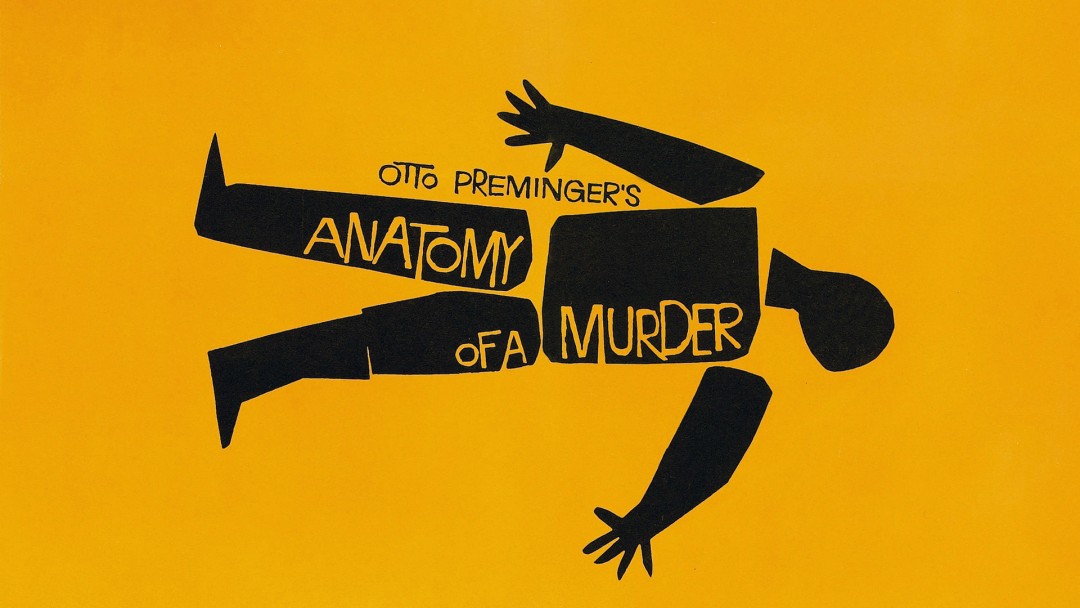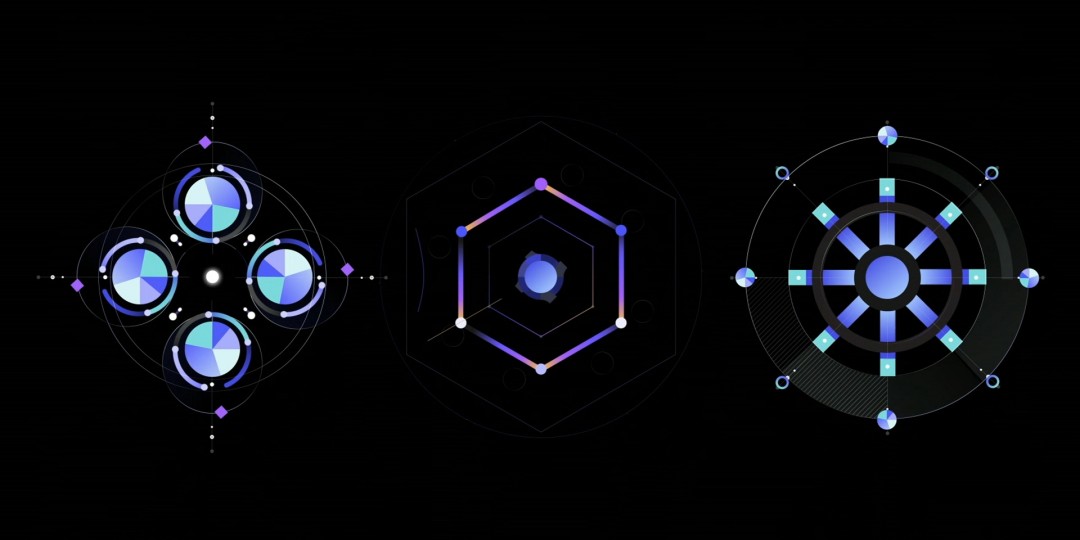The role of title design for events
Title design has a long history that can be traced back to the early days of film and television. In the early days of cinema, films were often shown without any title cards or opening credits, and the credits that did appear were often simple and brief. It wasn't until the 1920s and 1930s that title design began to evolve into a more sophisticated and stylized art form. One of the earliest and most influential title designers was Saul Bass, who is known for his iconic title sequences for films such as Psycho, North by Northwest, and West Side Story. Bass's work helped to establish title design as a critical element of film and television, and he has inspired countless other designers in the field.
SaulBass said, “My initial thoughts about what a title can do was to set mood and the prime underlying core of the film’s story, to express the story in some metaphorical way. I saw the title as a way of conditioning the audience, so that when the film actually began, viewers would already have an emotional resonance with it.”

In much the same way, both in-person or virtual, events can benefit from thoughtful title design—set up the underlying story, condition the audience, and even create an emotional resonance with the upcoming content. Leveraging our experience in TV and film, we approach opening title design for events from a theatrical state-of-mind. In this article we break down the emotional and functional components of effective event opening titles and share how the right design strategy can take the final piece to extraordinary levels.
CENTER THE ENERGY
Title design is a transitional mechanism. Unlike in film or TV, when a viewer has prepared emotionally for what they are about to watch (horror, comedy, action, etc), event attendees are joining from a mix of emotional states. The conference opener is an opportunity to bring a number of people together into a focused state of awareness and shared emotion. It’s where the tone is established and excitement is built. More importantly, it’s where you remind attendees why they chose to spend their valuable time at your event.
With the opening title we designed for healthtech brand HIMSS’s annual conference, we centered the energy of 40,000+ attendees to build excitement and establish a collective emotional state centered on the conference theme, Be the Change.

INTRODUCE & CREATE SPACE FOR THE BRAND(S)
Conference aesthetics are often wrapped within a sub-brand, typically an extension of the host’s core brand. This is an important consideration in title design as there should be a recognizable connection to the main brand while allowing room for the conference to take on a defined identity.
When thinking through the design this might mean narrowing the color palette or expanding on the core brand’s design elements. Building on marketing and advertising content attendees have seen up to this point is a useful approach as it reinforces the visual communication while presenting it in a more dimensional way.

ACTIVATE THE CONFERENCE THEME
As with film titles, a conference title is strongest when it doesn’t steal anything from the story but rather contributes additional connotation. Through use of metaphor and symbolism, the title can create a visual and emotional foundation for the content to stand upon.
For ThoughtSpot’s Beyond 2019 Conference, we imagined a piece of the ThoughtSpot identity as their AI search product, locating and extracting insights from a kaleidoscopic world of data and organizing them into meaningful form. This use of symbolism allowed us to bring to life the expansive concept of data visualization.
A MORE COMPLETE EVENT EXPERIENCE
As is essential with other experiences, the chance to set the tone from the first impression is invaluable for events. But as we've covered here, the right opening title is about more than just how to begin. It creates a thread that runs throughout and ultimately weaves the entire experience together.
Creating Purposeful Experiences: Tech-Forward Storytelling
Creating Purposeful Experiences: Tech-Forward Storytelling
An Interview with Mark Harris, Experience Designer/Strategist/Writer/Director
Mark Harris is a sought-after experience designer and strategist known for immersive storytelling that blends tech-driven content with dynamic physical spaces. Much like the experiences Mark helps to create, his background is a melding of technology and art—driven by interests both analog and digital.
URL or IRL, Mark has contributed to award-winning work representing the likes of Netflix, HBO, ACMI, MasterCard, and New York Life, to name a few. And he's quick to point out his role as part of a team of people who work to make these projects successful.
In this interview, we sat down with Mark to talk about what it takes to create unique but purposeful story experiences, specifically within physical spaces.
-----
lc: Mark, to say your background is diverse might be an understatement, how did you end up focused on experiential strategy?
Mark: It's a culmination of everything, really.
It's kind of a broad term, experiential strategy, but my background is in theater and a lot of this feels like putting on a show.
I started as an actor, and I was an actor for about a decade then I moved into technology during the dot com boom. I stayed focused there for a good chunk of time but I was missing a creative aspect in my life. I wound up moving into an area they call Creative Technology and worked on a project at the Sundance Film Festival that was an immersive, interactive, alternate reality game. That really lead to a shift in focus toward more creative applications of technology. I joined an agency called Murmur with Mike Knowlton and we did several interactive documentaries, theatre pieces, advertising work. Later, I moved on to an agency called Campfire, known for groundbreaking ad campaigns. That’s where I worked on things like West World, Sense8, and The Man in the High Castle.
lc: At this point, your journey into physical spaces hadn’t really started yet?
Mark: Over the past decade, I began shifting out of pure technology toward a more holistic view of things. Because my background is also creative— writing, acting, making theatre—when I moved into permanent physical stuff, ACMI (formerly Australian Centre for the Moving Image), New York Life, I started to understand how I could contribute to projects in a more holistic manner. I became much more interested in the conceptual phase. But my technology background feeds and informs all of my concepting, I’m able to provide technology guardrails without bringing in an additional technology director.
lc: Technology has become a more, we’ll say organic, part of our everyday lives —more prevalent. Has that made your job easier or more complex?
Mark: In some ways, it’s made it harder, because technology moves so quickly. You have your iPhone and you can instantly make your face into the face of a monkey or an alien or something. With those kinds of lenses and filters in everybody's hand, I think it becomes a little more challenging to impress people with the kinds of technologies we put into physical spaces.
I think it’s driven me away from leaning on technology because of such great technologies already being in people's hands and it so becomes much more about the story and the experience, informed by technology.
lc: With these high-tech screens being in our pockets and screens everywhere really, how do you attract people when digital content is part of the equation, and how do you keep them engaged?
Mark: It really depends upon the nature and the purpose of the screen and the content. Some screens might be in a lobby and they're just meant to pass by and you're not really meant to walk up to them. In those cases, it's interesting to think about digital art or generative art, but really just using it to add beauty to an environment and make people's days better. If you are intending for people to walk up to something, again, this kind of goes back to principles of storytelling: a sense of mystery, curiosity, suspense; what will draw someone in and engage them in your story?
lc: So, as you're thinking about a physical environment, how does the process start, so that at the end, the technology piece is something purposeful that accentuates or emphasizes the experience, and not just a gimmick?
Mark: It always comes back to the story and the experience you want to create. Sometimes you think about the emotions you want people to walk away with or the understanding you want them to take away. And those things tend to guide technology pretty accurately. If the technology gets too gimmicky, it can get in the way of the story.
An example would be like, using gestures to control content on a screen, waving your arm to move content around. That seems like an exciting idea, but depending on the emotional impact you want, it may actually be better just to have a screen activate when you walk up to it. It allows you to be a little more passive because even what seems like a simple gesture may get in the way. I always say people can either empathize or problem-solve. They cannot do both at the same time. Empathy requires a passive state, the state you find yourself in while watching a play or a move. Problem-solving is much more like the brain you engage in an escape room.
lc: How do you create a storytelling experience that has some longevity to it in a world where, to your point, everything does move so fast?
Mark: Yeah, that's the challenge, especially on something like a museum or even a corporate environment, where you may not get another chance to change things for ten years. It really comes back to the things I just mentioned. You focus on the basics.
I worked on one exhibit that that uses physical blocks. When you put those blocks together, the exhibit edits a new film together in real time. So, one block may have a clip from a Quentin Tarantino movie, and another block may have a clip from Star Wars, and you put them into a tray and you slide them together. And now you've got a new movie. Playing with blocks is a very basic activity that almost anyone can get excited about; ten years ago, now, ten years in the future.
lc: You mentioned generative content earlier. What's your perspective on how that seems to be growing in the digital space?
Mark:. I think a lot of people hear the word generative and they think some pretty specific thoughts about things that feel technology based. I'm really curious about exploring generative landscapes, cityscapes, the possibilities opened up by the growing prvelence of game engines like Unity and Unreal. And always influenced by real-time data. I love to think about generative work as an architectural component. I like to say “The building is alive.”


